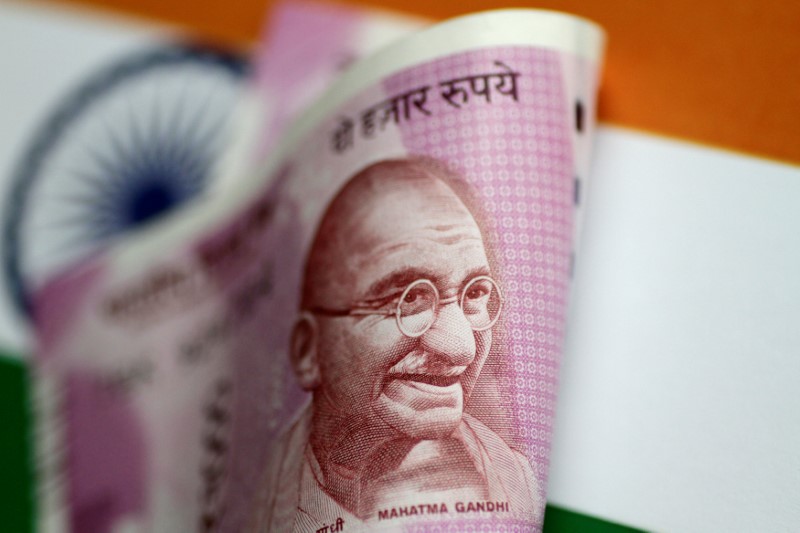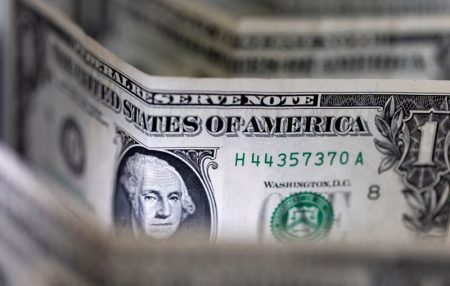By Anushka Trivedi
MUMBAI (Reuters) – Indian foreign exchange traders are betting on a rise in dollar/rupee forward premiums as U.S. interest rates are expected to ease later this year, bankers and analysts said.
The 1-year implied yield is forecast to rise to 3% levels within fiscal 2024 from around 2.40% currently, according to market participants.
The 1-year implied yield is down about 140 basis points (bps) over the last 12 months.
Forward premiums, a function of U.S. and India interest rate differentials, are expected to widen as the Federal Reserve is likely to ease rates gradually this year, while the Reserve Bank of India keeps them steady, economists said.
Fed futures suggest the U.S. central bank is likely to cut rates by about 60 bps from its peak this year. At the height of worries over the U.S. banking sector earlier this month, nearly 100 bps of rate cuts were priced in.
“USD/INR 1-year forward premium yield could go to 3%. For that we would need at least two rate cuts from the Fed,” said Anindya Banerjee, head of research – FX and interest rates at Kotak Securities.
The market is pricing in two to three rate cuts by December as generally when the Fed starts the process, it cuts rates quite fast because they are doing so in a crisis, Banerjee said.
Far forwards have been getting paid lately due to these Fed expectations, said a chief forex dealer at a public sector bank. From trading near 2.20% earlier in March, the 1-year yield has firmed to as much as 2.50%.
“The yield curve, which is currently flat, will steepen as the fiscal year progresses,” the trader said.
According to traders, the Fed rate cuts would also improve the outlook for inflows into Indian markets, and the RBI “at some point” could step in to limit the rupee’s appreciation.
This provides another reason to pay forwards, an interest rate trader at a large foreign bank said.
The RBI has in recent months bought dollars when the rupee rallied, to likely shore up its reserves.
To avoid the impact of its spot intervention on rupee liquidity, the central bank has been paying or doing sell/buy swaps in the forwards market, pushing premiums higher, according to traders.
Read the full article here














